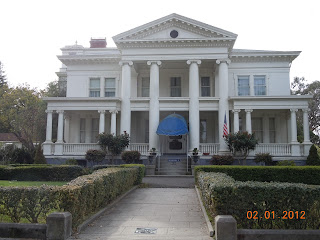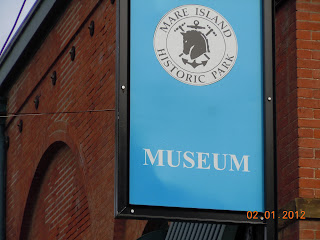Mare Island Naval Shipyard has the distinction of being the very first United States Navy Base and naval shipyard established on the Pacific Coast. The history of this island goes way back in time. The Spaniards explored the island in 1775 and the Rancho Suscol, which it was named, was granted to General Mariano Vallejo in 1844. Vallejo was a big Mexican military figure during the last years of Mexican rule. The city directly to the east of Mare island, Vallejo California, is named after the general.
The U.S. Navy actually purchased the land at Mare Island in 1853 and went ahead and constructed a naval shipyard there in 1854. This would have been just a few years after the Mexican American War where the U.S. took control of California. The shipyard was used for both construction and repair. In fact, for over one hundred years, Mare Island was a U.S. Navy shipyard. Dry docks were built during the last half of the 1800's, one sized over 500 feet long and another over 700 feet. Another interesting fact I think not widely known was that Mare Island was called on to dispatch vessels in the late 1800's to the northwest during Native American uprisings. This gives you a good idea of the history attached to this piece of land on the north side of San Francisco Bay. At the time, Mare Island was considered the largest of all naval shipyards in the world.
 |
| Mare Island dry dock |
 |
| Shipyard buildings and equipment |
At Mare Island during the 1930's there were about 6,000 workers. Estimates are that there were up to 50,000 workers assigned there during the Second World War. In fact, the amount of workers during World War Two became so large and the available housing so scarce that what was considered the world's largest bus system was put in operation at Mare Island traveling some 800,000 miles per month. Mare Island Shipyard was kept busy repairing ships that had been damaged during the war in the Pacific. This included not only U.S. vessels but also Royal Navy ships and Soviet Union vessels. Both surface ships and submarines were serviced at the base. During the life of this shipyard, 1854 to 1996, over 500 vessels were constructed there including nuclear submarines. In addition, the shipyard repaired over 1,000 vessels.
The size of boats and ships built at Mare Island were a variety of larger and small. The small ferryboat Pinafore was constructed there which operated between Mare and and Vallejo for thirty years. The larger of the vessels included the battleship U.S.S. California. During World War Two, Mare Island was responsible for the building of 17 submarines, 4 submarine tenders, 31 destroyer escorts, 300 landing craft and 33 small craft. In the year of 1943 alone, Mare Island built 18 destroyer escorts in just nine months. An absolutely enormous amount of wartime production. In regards to repairing vessels, Mare Island handled some 274 ships during 1942 alone. By 1944, damage repair work totaled some 4.3 million man days of work. It has been reported that twenty-two Mare Island built or refurbished submarines were responsible for the sinking of over 250 enemy ships. Nuclear submarine construction went on during the 1960's with the first completed sub the U.S.S. Sargo. The last nuclear sub built at Mare Island was the U.S.S. Drum which was launched in 1970.
See our Western Trips article on the Last Remaining Salt Water Paddlewheel Tugboat.
 |
| Mare Island Commandant's Quarters |
The Mare Island Historic Park Foundation state that their educational and museum projects aim to represent many of these activities in a meaningful and living way. The museum is located at 1100 Railroad Avenue on Mare Island. Their main phone number is 707-557-1538. The numbers to arrange tours are 707-644-4746 or 707-280-5742.
I believe you'll find a side trip to Mare Island California a very interesting and historically enlightening stop. Mare Island's location on the extreme northern side of San Francisco Bay allows it to be a fine addition to your Napa Valley or Sonoma Valley wine tour.
(Photos are from author's private collection)
View Larger Map


